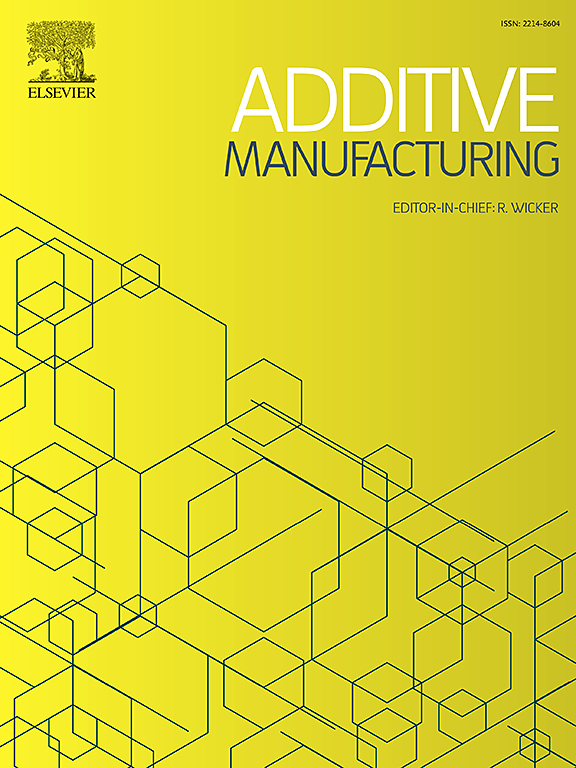Additive manufacturing of multicomponent glasses with enhanced optical properties via sol-gel
IF 10.3
1区 工程技术
Q1 ENGINEERING, MANUFACTURING
引用次数: 0
Abstract
Glass is the cornerstone material for various applications in modern society and industry owing to its fascinating and unique properties. Herein, a versatile sol-gel protocol is proposed for the manufacturing of multicomponent complex-shaped glass structures with enhanced optical properties via photopolymerization-based processes, specifically UV-assisted Direct Ink Writing (UV-DIW) and Digital Light Processing (DLP). The photocurable, all-liquid inks comprise tetraethyl orthosilicate, triethoxymethylsilane, zirconium butoxide and/or titanium isopropoxide for the formation of an inorganic backbone tethered to the organic photopolymerization-derived network through 3-(trimethoxysilyl)propyl methacrylate, which serves both as photocurable monomer and silica source. The flexibility of our sol-gel system offers access to various multicomponent compositions, including the use of bulk coloring pigments. Such formulations enable the fabrication of components with remarkable refractive index (1.548–1.572) and the highest Abbe number vd hitherto reported for 3D-printed parts (64.85). In addition, sintering temperatures are decreased to 1000°C, far below those typically required in conventional particle-based approaches (>1400°C). This work provides novel fabrication frameworks and technological enhancements, expanding the potential of glass additive manufacturing techniques for scaled-up and rapid production.
溶胶-凝胶法增材制造光学性能增强的多组分玻璃
玻璃是现代社会和工业中各种应用的基石材料,因为它具有迷人和独特的性能。本文提出了一种多功能溶胶-凝胶方案,用于通过基于光聚合的工艺,特别是uv辅助直接墨水书写(UV-DIW)和数字光处理(DLP),制造具有增强光学性能的多组分复杂形状玻璃结构。光固化的全液体油墨包括正硅酸四乙酯、三乙氧基甲基硅烷、丁氧化锆和/或异丙醇钛,通过3-(三甲氧基硅基)甲基丙烯酸丙酯形成无机骨架,连接到有机光聚合衍生的网络上,该网络既可作为光固化单体,也可作为二氧化硅源。我们溶胶-凝胶系统的灵活性提供了各种多组分成分,包括散装着色颜料的使用。这样的配方能够制造出具有显著折射率(1.548-1.572)和迄今为止报道的3d打印部件最高阿贝数vd(64.85)的组件。此外,烧结温度降低到1000°C,远低于传统颗粒基方法(1400°C)的典型要求。这项工作提供了新的制造框架和技术增强,扩大了玻璃增材制造技术的潜力,以实现规模化和快速生产。
本文章由计算机程序翻译,如有差异,请以英文原文为准。
求助全文
约1分钟内获得全文
求助全文
来源期刊

Additive manufacturing
Materials Science-General Materials Science
CiteScore
19.80
自引率
12.70%
发文量
648
审稿时长
35 days
期刊介绍:
Additive Manufacturing stands as a peer-reviewed journal dedicated to delivering high-quality research papers and reviews in the field of additive manufacturing, serving both academia and industry leaders. The journal's objective is to recognize the innovative essence of additive manufacturing and its diverse applications, providing a comprehensive overview of current developments and future prospects.
The transformative potential of additive manufacturing technologies in product design and manufacturing is poised to disrupt traditional approaches. In response to this paradigm shift, a distinctive and comprehensive publication outlet was essential. Additive Manufacturing fulfills this need, offering a platform for engineers, materials scientists, and practitioners across academia and various industries to document and share innovations in these evolving technologies.
 求助内容:
求助内容: 应助结果提醒方式:
应助结果提醒方式:


